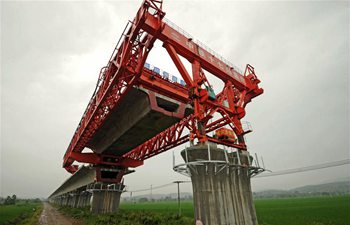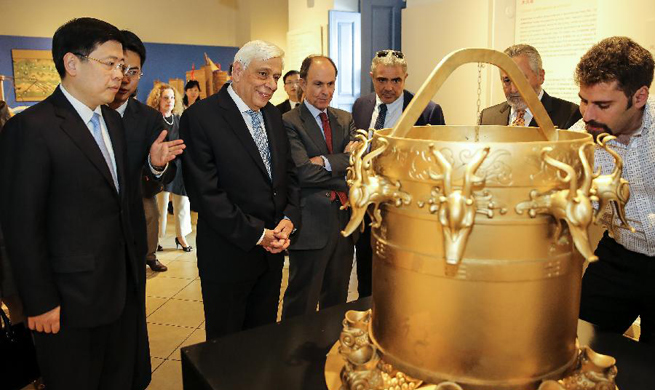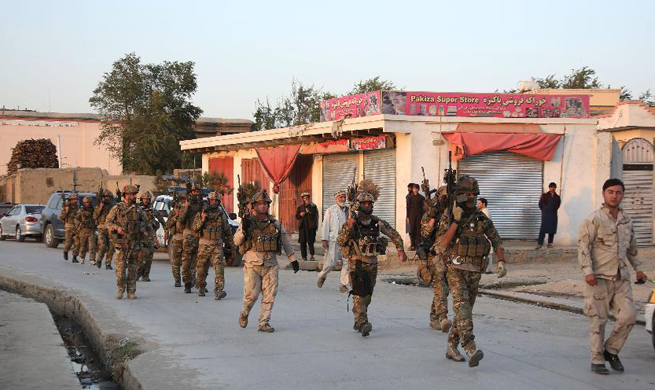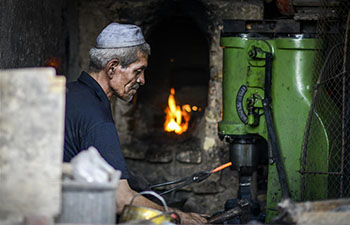SEOUL, Sept. 28 (Xinhua) -- South Korean President Moon Jae-in on Thursday stressed a need for early transfer of wartime operational control of its forces from the United States to better tackle the Democratic People's Republic of Korea (DPRK)'s nuclear and missile threats.
Moon said in a speech to celebrate the 69th anniversary of Armed Forces Day that the government aimed to regain the wartime command of South Korean forces early from Washington, and that the transfer will make the military's capability leap forward.
The president said the DPRK will be scared of the South Korean military when it has the wartime control of its own troops.
South Korea handed over its operational command to the U.S. forces after the three-year Korean War broke out in 1950. The country won back its peacetime operational control in 1994.
To strengthen its standalone defense capability, Moon said the military should make all-out efforts to rapidly build a so-called "three-axis" defense platform, including the Kill Chain, the Korean Air and Missile Defense (KAMD) and the Korea Massive Punishment and Retaliation (KMPR).
The Kill Chain is designed to preemptively strike the DPRK's missile launch sites when any sign of the first strike is spotted. The KMPR is a project to preemptively strike the DPRK's leadership and headquarters with massive missile attacks when Pyongyang's first strike sign is detected.
The KAMD is a project to develop its indigenous missile defense system to shoot down incoming DPRK missiles at multiple layers. It includes the development of interceptors such as medium-range surface-to-air missiles (M-SAM) and long-range surface-to-air missiles (L-SAM) that can intercept missiles at an altitude of less than 100 km.
Moon said top priority should be put on securing defense capability against the DPRK's nuclear and missile threats.
Tensions ran high on the Korean Peninsula as the DPRK conducted its sixth and most powerful nuclear test on Sept. 3. It was followed by its test launch of an intermediate-range ballistic missile (IRBM) over Japan in response to the UN Security Council's unanimous adoption of a new resolution toughening sanctions on Pyongyang.
The war of rhetoric was resumed between Pyongyang and Washington after U.S. President Donald Trump warned Pyongyang of a total destruction if it continues to threaten the United States and its allies.
In response, top DPRK leader Kim Jong Un issued a rare statement, which warned Washington of the highest-level hardline countermeasure in history.

















